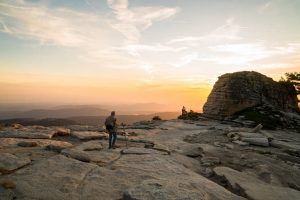By Judi Hussain
For some the world turned upside down last year and only now is beginning to right itself into what may morph into a “new normal.” Some things never change, though. Whether local or visitor, if you’re going to prowl around our mountains, lakes, rivers and trails, make safety your first priority, so it doesn’t become your last act.
Related Story: Put Safety At The Top Of Your Memorial Day Checklist
Every year we hear of accidents or lives lost because hikers, swimmers, boaters, bikers think they’re invincible.
- Do Your Homework – know where you’re going and how to get there. If hiking, do you know the trail? Even if you’ve hiked it before, hazards crop up as a result of natural events or man-made catastrophes.
- Go prepared. Do you know how long the trail is? Do you know the depth of the water you’ll boat or swim in? Do you wear life jackets when on-board your craft? Do you know the Ten Essentials of hiking, and do you carry them? Is there elevation gain along the trail? At what altitude does the trail start, and are you acclimated? Don’t find out, halfway up that 10,000 foot peak, that you have altitude sickness.
- Pack properly. Do you have a flashlight or headlamp in case the journey takes longer than expected? Do you have food and/or snacks? What about a first-aid kit? Have you left your

Shuteye Peak at Sunset – Photo by Steve Montalto
itinerary and proposed schedule with someone who can initiate a search if you don’t report in when expected? The photo at left illustrates the adage “Do as I say, not as I do.” We began this hike up 8,300 foot Shuteye Peak at 3 pm. At sunset we found ourselves barely off the summit, one headlamp between us. Luckily the tower lookout “lent” us another, with no expectation of its return. Hiking down a gravel-strewn path after dark is dangerous, even if you are blessed with good balance, which I am not.
- Heed warnings. For out-of-the-area visitors—or even locals—Visit Yosemite/Madera County, our visitors bureau, has the most up-to-the minute details on where to go, what to do, what to look out for. They can tell you about Yosemite National Park regulations, trail conditions, hazards and more. Many volunteers are hikers and can dispense great advice on trails to trek or bike for your activity level. Each year multiple accidents (and deaths) happen because folks don’t listen to those in-the-know who say to avoid the rocks and creek at Angel Falls. Keep in mind that if you slip and can’t extricate yourself, you put search and rescue personnel at great risk to their own safety to haul you out. Call 559/683-4636 or visit yosemitethisyear.com
- Don’t rely on GPS. Navigation systems don’t work reliably in our area. Carry a paper map, a compass (and know how to use it) as a backup. Also check with the agency in charge for any road or trail conditions you might encounter. The windstorm our area experienced in January, 2021 did major damage, much of which remains to be marginalized. Yosemite National Park Sierra National Forest
Our area sports a wealth of activities for the outdoor-minded. Taking those extra moments to prepare can mean the difference between a life well-lived versus a life lost needlessly.




